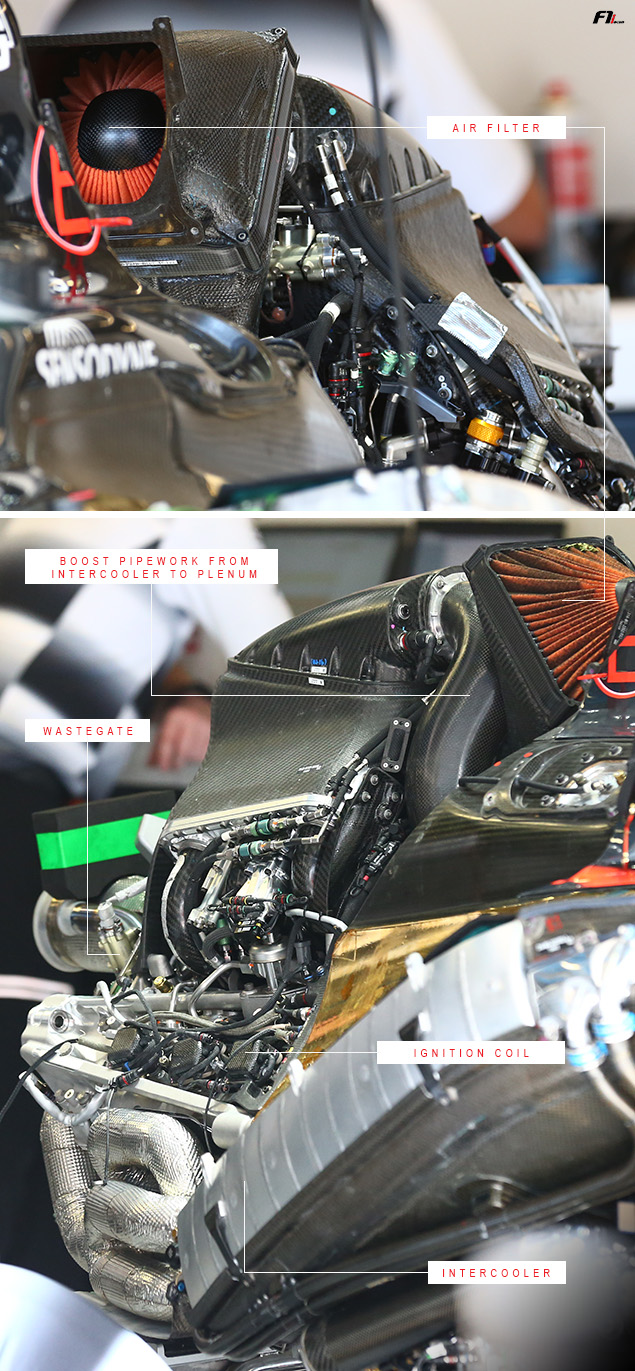What can be found under the skin of Fernando Alonso and Jenson Button’s MP4-31 charger? Nicolas Carpentiers provides you with a series of exclusive images along with the explanations.

PROGRESS DESPITE LIMITED SCOPE FOR DEVELOPMENT
Despite a testing return to Formula One, Honda elected not to change the overall architecture of its V6 turbocharged power unit ahead of the second campaign in its renewed alliance with McLaren.
This means the compressor and turbine still feature within the ‘Vee’ of the engine, whereas the potent Mercedes design uses a split-turbo concept with one element at the front and the second one at the back.
However, the size of both elements, which was a weakness on the 2015-spec unit, has been increased as much as possible in a bid to drive the turbine shaft more forcefully where the MGU-H recovers kinetic energy.
“I think the original turbine was developed with size constraints as the first priority, and performance was the second priority; that has changed now,” Honda’s head of F1 project Yusuke Hasegawa was quoted as saying by Racecar Engineering. “This year we increased the size of the turbine.”
Already more efficient, the turbocharger was further optimised ahead of the Canadian Grand Prix, with an update that aimed at improving energy recovery.
The extra room needed to house the resized turbocharger was found around the air inlet plenum, which is slightly bigger compared to its 2015-spec predecessor. Inside, the intake manifolds now point upwards instead of bending at an angle of 90 degrees.
Honda’s ERS might be more efficient this year but the overall architecture of the RA616H power unit continues to limit the Japanese manufacturer to an undersized turbocharger
While the Honda energy recovery systems (ERS) are more efficient, the turbocharger remains undersized compared to what can be found on the other F1 power units, since the overall architecture of the RA616H engine prevents any further increase.
With the engine development token system set to be scrapped at the end of the current campaign, the Japanese manufacturer has planned a major overhaul of its package. Engineers at its Sakura factory have been busy working on next year’s engine spec since January, with the project gradually absorbing resources tabled for 2016.
On the image above, one can spot the boost pipework that channels the compressed and cooled air from the intercooler up to the plenum. One can also notice the peculiar shape of the orange-coloured air filter with its circular deflector sitting atop.

 '
'




